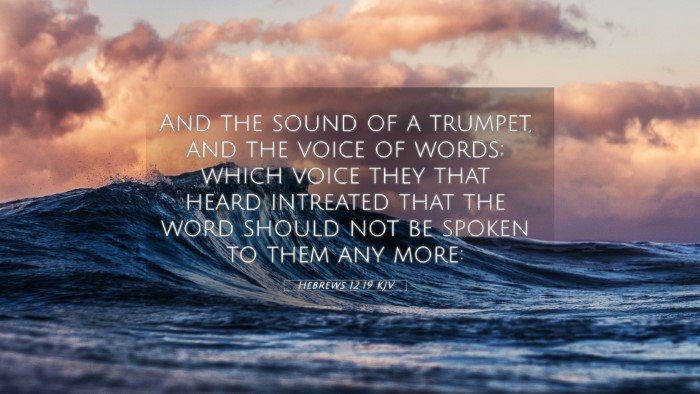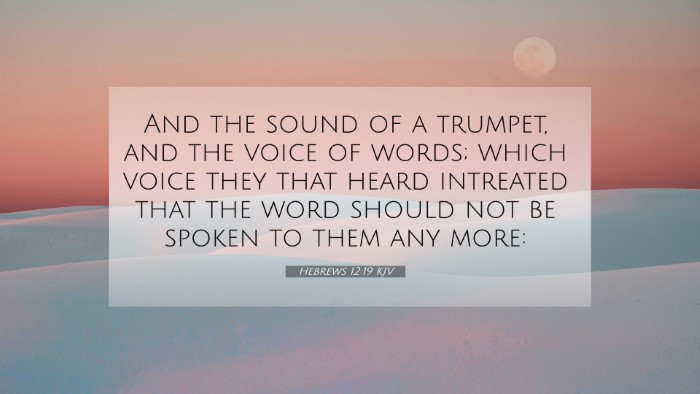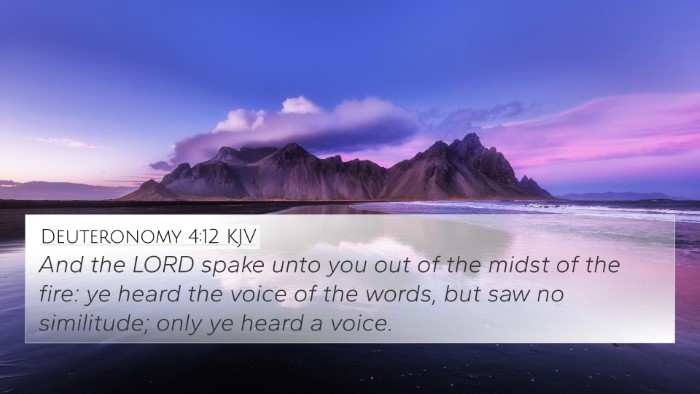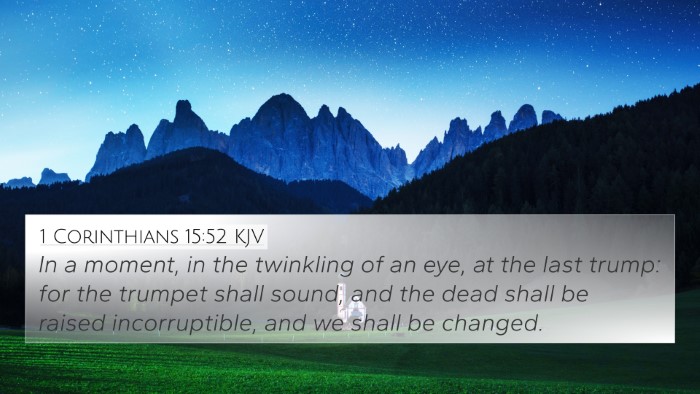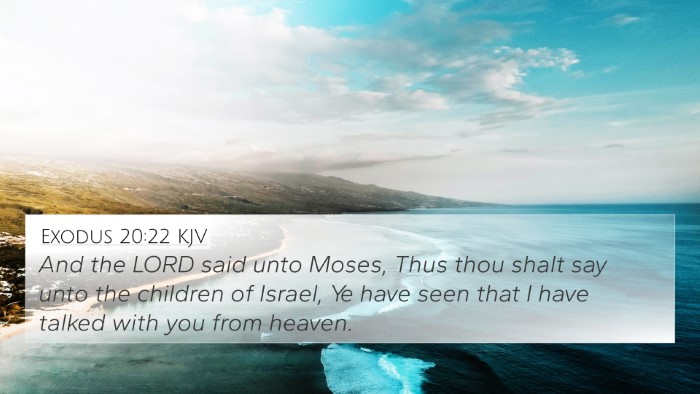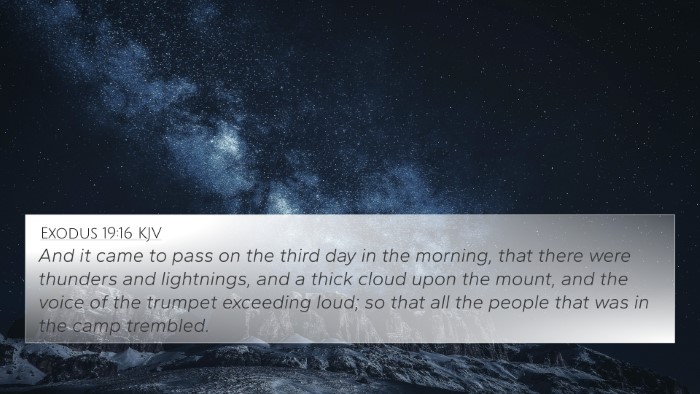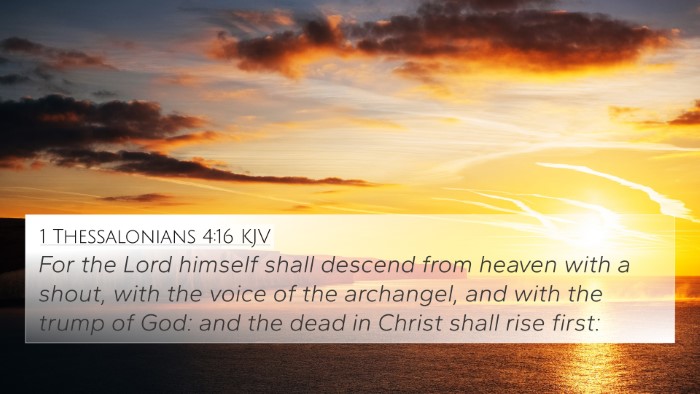Meaning and Interpretation of Hebrews 12:19
The verse Hebrews 12:19 states:
"And the sound of a trumpet and the voice of words; which voice they that heard entreated that the word should not be spoken to them any more."
This verse illustrates a significant moment from the Old Testament, specifically referring to the scene at Mount Sinai when God's presence was manifested with overwhelming power. This moment serves as a warning to the hearers of the Hebrews letter regarding the greater revelation in Christ.
Contextual Understanding
Matthew Henry highlights that this passage reflects on the advent of the law given at Sinai. It emphasizes the fear and trembling that accompanied God's presence, indicating how unapproachable God was under the Old Covenant. The voice and the trumpet signify the divine authority and holiness of God that man could not withstand, paralleling the covenant given to Israel.
Albert Barnes further expands on this by noting that the people of Israel, terrified by the sight and sounds from Mount Sinai, requested Moses to speak to them rather than God. This narrative underlines human fear in the presence of divine holiness and serves as a deeper contrast to the confidence believers have through Christ.
Adam Clarke explains that the fear of the Israelites represented a perceived distance from God, which is transformed under the New Covenant through Jesus Christ. Thus, while the law was given with fear, the grace offered through Christ invites believers into a relationship exemplified by peace rather than dread.
Key Themes and Insights
- Divine Authority: The sound of the trumpet signifies God's powerful voice, reminiscent of His authority during the giving of the law.
- Human Fear: The people's plea for Moses to mediate shows the fear of approaching God directly.
- The Transition: Hebrews 12:19 contrasts the old covenant of fear with the new covenant of grace through Christ.
- Approachability of God: The shift from Sinai to the grace offered by Jesus highlights the new relationship believers have with God.
Connecting Bible Verse Cross-References
To fully understand Hebrews 12:19, various cross-references can provide deeper insight:
- Exodus 19:16-19: The account of God's revelation at Sinai.
- Deuteronomy 5:23-27: The people's fear of God's voice and their request for mediation.
- Galatians 4:24: The allegory of two covenants - one from Sinai and another from the promise made in Christ.
- Hebrews 12:18: Directly contrasts coming to Mount Sinai with coming to Mount Zion.
- Romans 8:15: The spirit of adoption enabling believers to approach God as Father.
- 1 John 4:18: The perfect love of Christ casts out fear.
- Matthew 27:51: The tearing of the temple veil signifies access to God through Christ.
Application and Reflection
Understanding Hebrews 12:19 leads to several practical applications for believers today:
- Courage in Prayer: Believers can approach God without fear, thanks to Christ's mediation.
- Respect for God's Holiness: While we can boldly approach, we must remember God's holiness and our need for reverence.
- Encouragement in Trials: Like the early Christians, believers can find strength in God’s promises amidst fears and challenges.
Conclusion
Hebrews 12:19 not only recounts an event filled with fear and awe but also sets the stage for understanding the new relationship believers enjoy through Christ. The contrasts drawn between the old and new covenants reveal the grace that supersedes fear, encouraging a life of faith brave in the face of trials. The thematic Bible verse connections found in this passage exemplify the transformative work of God throughout scripture.
Further Considerations for Study
Engaging with tools for Bible cross-referencing can enrich your understanding:
- Bible Concordance: A helpful resource for finding specific references and their relationships.
- Cross-Reference Bible Study: Methods to contextualize verses and draw connections across the scriptures.
- Comprehensive Bible Cross-Reference Materials: Tailored guides to explore inter-Biblical dialogues.
How to Continue Your Studies
Consider how to find cross-references in the Bible, such as through dedicated software, or by consulting various translations that might offer differing insights on the same passages. Identifying connections between the Old and New Testaments can also enhance comprehension of thematic elements, linking the Prophets and Apostolic teachings as illuminated further by passages like Hebrews 12:19.

